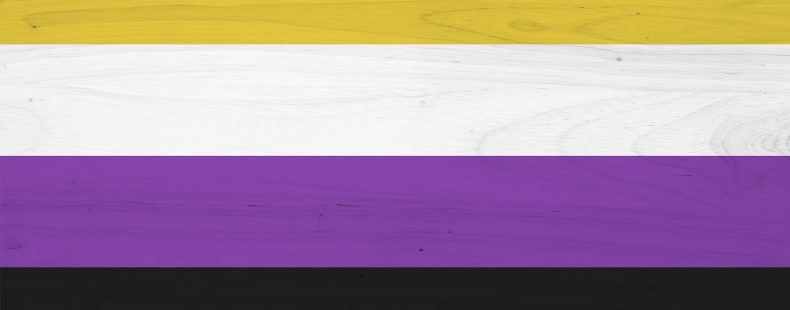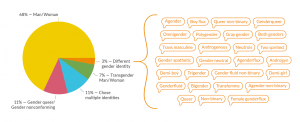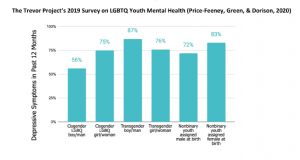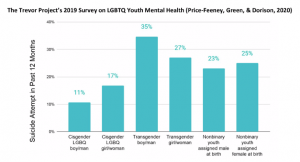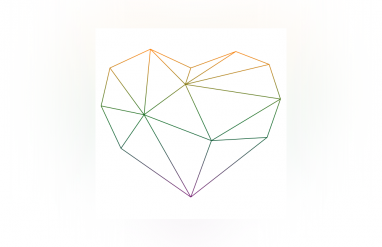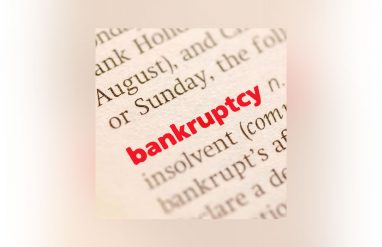by Rory Gory
Many people are raised to believe that gender and sex are the same thing, and that there are two options available to us: male or female. But neither sex nor gender is inherently binary—the belief that people must be classified into one of these two categories.
When something can’t be placed in two boxes, we call it nonbinary, meaning “not consisting of, indicating, or involving two.” And when it specifically comes to gender, nonbinary is a word that helps give voice to a diverse range of gender identities.
International Nonbinary People’s Day, observed on July 14th, is an occasion to celebrate the diversity of the many gender identities that exist beyond the binary. Whereas Transgender Day of Visibility or Transgender Day of Remembrance honors the transgender and nonbinary community as a whole, International Nonbinary People’s Day raises awareness for people with gender identities that aren’t necessarily male or female.
Let’s explore why it’s important to have words for nonbinary gender identities.
Discover more about the background and purpose of International Non-Binary People’s Day here.
What does nonbinary mean?
Nonbinary people have a gender identity that does not fit into the male/female binary. They are often included under the umbrella term of transgender, a community that refers to people whose gender identity does not correspond with their sex assigned at birth. While transgender and nonbinary people are often discussed as a group, there are many distinct genders within this group.
Nor are nonbinary people a monolithic group. Like transgender, nonbinary is also used as a general term, but there are many ways to identify outside the binary. There are those whose gender identity:
- isn’t fixed, such as gender-fluid people;
- experience a variety of masculine, feminine, or androgynous identities, such as pangender people;
- do not identify with any gender, such as agender people;
- and more.
Do nonbinary people really exist?
Absolutely! As our society begins to see gender beyond a two-label system, an increasing number of young people are now identifying as nonbinary. One in four LGBTQ youth surveyed in The Trevor Project’s National Survey on LGBTQ Youth Mental Health identified outside of the gender binary, and youth surveyed used over 100 different words to describe their gender identity!
Young people are expanding language to describe and communicate the nuances of gender in exciting new ways, but many people are still trying to keep up with the new words that transgender and nonbinary people are using, and some people may wonder why we need so many labels.
While it may take a bit of time to learn them, these words aren’t frivolous. According to new research by The Trevor Project released during Pride month 2020, distinct differences in mental health outcomes exist among members of the transgender and nonbinary population. Language to describe gender isn’t just about describing how you relate to your identity. Labels also allow researchers to study specific identities and their outcomes, informing the policies and programs we create to support the transgender and nonbinary community.
Is nonbinary the same as transgender?
The short answer: it’s complicated. Because many of us are raised to believe the default, normative identity for a person is binary (male or female) and cisgender (having a gender identity that corresponds with one’s biological sex assigned at birth), it’s very easy and tempting for binary cisgender people to lump people who are not binary cisgender together.
Generally speaking, no matter what sex a person is assigned at birth, they can be:
- a boy or a man. In most cases, we would define their gender identity as binary.
- a girl or a woman. In most cases, we would define their gender identity as binary.
- a nonbinary child or a person. In most cases, we would define their gender identity as nonbinary.
- Remember: transgender refers to people whose gender identity does not correspond with their sex assigned at birth.
Some transgender people identify as nonbinary. Some nonbinary people identify as transgender. While transgender and nonbinary people as a group have much in common, there are also differences in lived experience and mental health outcomes between trans men, trans women, and nonbinary people.
Some people identify with a binary gender:
For example, a binary transgender man identifies simply as a man, and a binary transgender woman identifies as a woman. Trans men and women should never be forced to disclose their identity or personal medical history to satisfy the curiosity of cisgender people.
Some people identify with a nonbinary gender:
A nonbinary person identifies with a gender outside of “the male-female gender binary”—such as an agender person, whose identity is gender-neutral rather than specifically male or female.
Gender identity, or one’s internal understanding of one’s gender, is different from gender presentation, or how one’s gender is perceived and interpreted in the world. We shouldn’t assume what a person’s gender identity is based on whether they are presenting in a way that is interpreted as masculine or feminine (such as through clothing), or is perceived to be a specific gender due to secondary sex characteristics. There is no right way to be nonbinary, or to express it.
Binary and nonbinary people may need different social support:
Binary people may prefer gendered language when referring to themselves, whereas nonbinary people may prefer gender-neutral language to be adopted so that identities outside the binary can be recognized and acknowledged, too. For example, a trans woman may prefer the term mother over parent, whereas a nonbinary parent might prefer the term parent over mother or father.
Why we need to support nonbinary people
When we talk generally about transgender and nonbinary people, we need to first make two things clear:
- We are talking about gender identity, which is our internal understanding and experience of our own gender, and not sex, which is one’s designation at birth as male, female, or intersex. While often confused, gender and sex are different.
- We are not talking about sexual or romantic orientation. Cisgender, transgender, and nonbinary people also have a sexual orientation, which includes the asexual spectrum. Just because you know someone’s gender does not mean you know their sexual orientation.
Our new research at The Trevor Project shows that transgender and nonbinary youth were 2 to 2.5 times as likely to seriously consider and attempt suicide compared to their cisgender peers within the LGBTQ community. Transgender and nonbinary youth also reported having been physically threatened or harmed at nearly twice the rate of LGBQ (lesbian, gay, bisexual, or queer) youth.
These outcomes are heartbreaking and reveal how much transgender and nonbinary youth need to be protected within our communities. We want to make it abundantly clear: trans rights are human rights! Nonbinary people do exist and deserve our acceptance and support, too.
Nonbinary vs. gender non-conforming vs. gender-variant
Nonbinary is sometimes used as an umbrella term for all people whose gender isn’t strictly male or female, but it’s not the only label that people outside the binary identify with. Researchers historically used the term gender non-conforming (GNC) to refer to this group, but this was not as often used by people within the community to describe their gender. It fell out of popularity as it implied gender is something one must “conform” to. Umbrella terms such as gender-variant or gender-diverse people are also used, but over time, nonbinary has become the more common term.
The many and diverse words for nonbinary identities
Just because the term nonbinary is commonly applied to a group of people does not mean that everyone who may be classified outside the binary necessarily identifies with or prefers the term nonbinary. There are other identities that aren’t strictly binary that use different words or labels to more clearly express the nuances of that particular gender. Even though they are often included under the umbrella of nonbinary genders, these words to describe identity are not necessarily interchangeable or synonymous. Before labeling a person as nonbinary, it’s important to make sure that you know how that person identifies their gender before assuming which word they prefer to use to describe themselves.
- Agender (a– meaning “not, without”) or neutrois (taken as a blend of the French words for neuter and three) people do not identify with any gender; while their internal orientation is gender-neutral, they may physically present in a variety of ways or use varying pronouns.
- Xenogender (based on xeno-, meaning “foreign, guest, strange”) is sometimes used as an umbrella term for an entire category of nonbinary genders that are defined by characteristics with no relation whatsoever to “female” or “male.”
Other gender identities may fluctuate between or identify their gender in masculine, feminine, or androgynous ways, without a fixed identity as a “man” or “woman.”
- Genderqueer, genderfluid, or genderflux people experience a fluid or fluctuating (hence –fluid and –flux) gender among a variety of identities and expressions.
- Pangender (pan– meaning “all) people have a gender identity that encompasses the entirety of the gender spectrum.
- Bigender (bi–, “two”), demigender (demi–, “half”), or intergender (inter-, “between”) people may lean more towards one gender identity than another, such as a demigirl.
It’s also important to note that culture plays a role in how we identify gender. For example, Indian hijra and Samoan fa’afafine cultures recognize a “third gender.” The term two-spirit is also used by some modern Indigenous North Americans to describe Native people in their communities whose sexual, gender, or spiritual identity is not binary or heterosexual.
Take a closer look at the evolving language of gender identity and expression.
Nonbinary identities and the law
In some places in the United States, there is now legal recognition of genders besides male and female, such as introducing the letter X as a nonbinary or other gender marker on identification documents. For example, as of 2019 in the state of Oregon, any person can select X on their driver’s license or identification card without any requirements of proof of gender.
Intersex people have also fought legal battles to have their correct genders recognized on birth certificates, such as nonbinary intersex writer and activist Hida Viloria, who was able to change her birth certificate to “intersex” in New York in 2017. Intersex babies are born with any of several variations in sex characteristics including chromosomes, gonads, sex hormones, or genitals that do not fit the typical definitions for male or female bodies. Sex does not define gender, and intersex people may grow up to identify as male, female, nonbinary, or another gender identity.
How language matters for the nonbinary community
Based on the most recent findings from The Trevor Project, we can see that, while transgender and nonbinary people as a whole have higher rates of suicidality than their cisgender peers, there are differences between transgender and nonbinary people. Language for nonbinary identities allows us to observe where the nonbinary community may need additional support or attention, as well as to notice differences in outcomes depending on challenges relating to sex assignment at birth.
When describing a nonbinary identity, sex assigned at birth is sometimes used as a shorthand to describe one’s identity, e.g., if you were assigned female at birth (abbreviated as AFAB nonbinary) or if you were assigned male at birth (AMAB nonbinary). Since sex is not binary either, ideally future studies will also look at people assigned intersex at birth. Sex assignment should never be used to define a person’s gender, but it can provide researchers with information about differences in lived experiences based on perceived gender or healthcare challenges associated with one’s body or anatomy.
When we look at the results for symptoms of depression, we can see that cisgender LGBQ (lesbian, gay, bisexual, or queer) women and transgender women have similar outcomes—but disparities exist among trans men and AFAB nonbinary people.
However, it’s important to remember that there are a variety of struggles within the transgender and nonbinary community. We can’t simply say one gender identity has it worst across all outcomes, because the struggles of each gender identity measured here is different, intersectional, and complex. Language allows us to gather data to help understand these complexities.
For example, while AFAB nonbinary people and trans men outpace other groups for symptoms of depression, AFAB nonbinary people have slightly lower rates of suicide attempts than transgender women, while transgender men show an even more significant need for support.
Data allows us to recognize our commonalities and our differences. By grounding our understanding of gender in research, rather than anecdotal evidence or stereotypes, we can work together to support the transgender and nonbinary people who are most vulnerable within our community.
How can we better understand and support the nonbinary community?
We all deserve language to self-define our gender and to communicate our gender to each other. Allies can show their support by educating themselves on gender identity, and adopting an attitude of curiosity rather than frustration or disapproval. Within the transgender community, we can support nonbinary people by appreciating our community’s diversity, and refraining from assuming that we all share the same experiences with gender.
And we can all support the nonbinary community by celebrating the evolution of language to describe gender beyond the binary, especially on International Nonbinary People’s Day. Gender is often an ongoing journey of self-discovery, and as a community, we’re still writing the narrative—including the language we use to tell the story.
Rory Gory (pronoun flexible) is the Digital Marketing Manager for The Trevor Project, the world’s largest suicide prevention and crisis intervention organization for LGBTQ young people. They are responsible for engaging The Trevor Project’s social media audience of over a million followers. Rory’s guidelines for messaging on the subjects of suicide, mental health, and identity have been used by Facebook, Capitol Records, and Netflix and their bylines include Teen Vogue, them., USA Today, and Dictionary.com.
